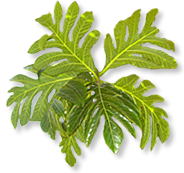 St. John 516A
St. John 516A3190 Maile Way, #102
Honolulu, HI 96822
Phone: (808) 956-7369
Fax: (808) 956-3894
Email: paull@hawaii.edu
Robert E. Paull
Professor/Researcher
Specialties:
Plant Physiology and the Postharvest Handling and Storage of Tropical Fruit, Vegetables and Ornamentals
Education:
B.S., University of Sydney, 1966 - Agronomy Ph.D., University of California at Berkeley, 1975 - Plant Physiology
Courses Taught:
Research Interests:
Preharvest and postharvest factors impacting postharvest quality, handling and storage of tropical fruits, vegetables and ornamentals.
<div> My area of research interest is in plant physiology and its relevance to the postharvest physiology, handling and storage of tropical fruits, vegetables and ornamentals. The research program projects range from basic science to the adaptation and application of technology to the improvement of postharvest quality and handling in an integrated and systematic way. </div> <div> </div> <div> The basic research include studies on the regulation of pineapple flowering, and pineapple and papaya fruit growth and development. We have also been involved with four genomics projects: papaya, pineapple, Asian Pear and Sacred Lotus, contributing to the sections dealing with carbohydrate metabolism and the regulation of fruit ripening. The more applied focus is on field production approaches to improving product quality of tropical fruit and ornamentals, insect disinfestation and handling and marketing of these products. This research has lead to improvement in production practices, and the postharvest handling and marketing of these commodities. All the research is done in conjunction and with the support of local industries and individual growers, shippers and marketers.</div> <div> </div> <div> <strong>Current projects include the following: </strong></div> <div> 1.<span style="white-space:pre"> </span>Analysis of the pineapple meristem transcriptome immediately after ethylene treatment to induce flowering. The response to ethylene does not seem to involve the GA-DELLA model as proposed for Arabidopsis but specific C2H4 response transcription factors.</div> <div> 2.<span style="white-space:pre"> </span>Evaluation of the pineapple fruit transcriptome as it relates to a seasonal flesh disorder that can lead to up to 70% fruit loss after harvest. Based upon our physiological and biochemical studies, this condition is related to sugar metabolism.</div> <div> 3.<span style="white-space:pre"> </span>A slow ripening papaya mutants with a single QTL is being evaluate using gene expression studies, this is also related to disruption at the 25% ripe stage following some postharvest stress treatments required for marketing.</div> <div> 4.<span style="white-space:pre"> </span>Preharvest fertilization and management practices on the development and regulation of pineapple flesh translucency that is similar to water core in apples.</div> <div> 5.<span style="white-space:pre"> </span>Taro acridity requires all parts of the plant to be cooked before eating. The belief is that the crystals (raphides) in the tissue cause this itchiness. However, our research suggests that it is the proteins associate with the crystals that are tagged in our research as allergenic. The objective of this project is to develop an assay for use in plant breeding and for commercial processors.</div> <div> 6.<span style="white-space:pre"> </span>An overall interest is in the evolution of fleshy fruit and fleshy fruit ripening that arose independently numerous times during angiosperm evolution.</div> <div> </div>
Selected Publications:
- Hobbs, J., P. Prakash, R. Paull, H. Hovhannisyan, B. Markowicz, and G. Rose. 2021. Large-Scale Pineapple Flower Counting through Deep Density-Estimation. Frontiers in Plant Science. 11, article #599705.
- Zhou, Lili, Maria Eloisa Q. Reyes, and Robert E. Paull. 2020. Papaya (Carica papaya L.) leaf area estimation and single-leaf net photosynthetic CO2 assimilation rate following leaf defoliation and fruit thinning. HortScience 55, 1861-1864
- Chen, L.-Y., R. VanBuren, M. Paris, H. Zhou, X. Zhang, C. M. Wai, H. Yan, S. Chen, M. Alonge, S. Ramakrishnan, Z. Liao, J. Liu, J. Lin, J. Yue, M. Fatima, Z. Lin, J. Zhang, L. Huang, H. Wang, T.-Y. Hwa, S.-M. Kao, J. Y. Choi, A. Sharma, J. Song, L. Wang, W. C. Yim, J. C. Cushman, R. E. Paull, T. Matsumoto, Y. Qin, Q. Wu, J. Wang, Q. Yu, J. Wu, S. Zhang, P. Boches, C.-W. Tung, M.-L. Wang, G. Coppens d’Eeckenbrugge, G. M. Sanewski, M. D. Purugganan, M. C. Schatz, J. L. Bennetzen, C. Lexer and R. Ming (2019). "The bracteatus pineapple genome and domestication of clonally propagated crops." Nature Genetics 51, 1549-1558.
- Paull, R. E., G. Uruu and N. J. Chen. 2020. Rapid Field Assay for Pineapple Fruit Acidity. HortTechnology 30, 593-596.
- Robert E. Paull and Ching-Cheng Chen, 2018. Postharvest Physiology, Handling, and Storage of Pineapple. In Garth M. Sanewski, Duane P. Bartholomew and Robert E. Paull, (Editors), The Pineapple 2nd Edition Botany, Production and Uses. 336 pages, CABI, United Kingdom
- Wong, K., Motomura, S. and Paull, R.E. (2018). Postharvest Handling and Food Safety – Layers of Protection. Food Safety and Technology Series. FST-66.
- Love, K., Gasik, L. and Paull, R.E. (2019). Durian. University of Hawaii at Manoa, College of Tropical Agriculture and Human Resources. Fruit, Nut, and Beverage Crops, F_N-53.
- Paull, R.E. and Chen, N.J. (2020). Tropical fruit genomes and postharvest technologies. Acta Hortic. 1299, 113-122
- Ken Love, Robert E. Paull, Alyssa Cho and Andrea Kawabata. 2017. Tropical Fruit Tree Propagation Guide. University of Hawaii at Manoa, College of Tropical Agriculture and Human Resources. Fruit, Nut, and Beverage Crops March 2017, F_N
- Love, K., and Paull, R.E. (2020). Finger Limes. University of Hawaii at Manoa, College of Tropical Agriculture and Human Resources. Fruit, Nut, and Beverage Crops, FN-56
- List of publications (PDF)


